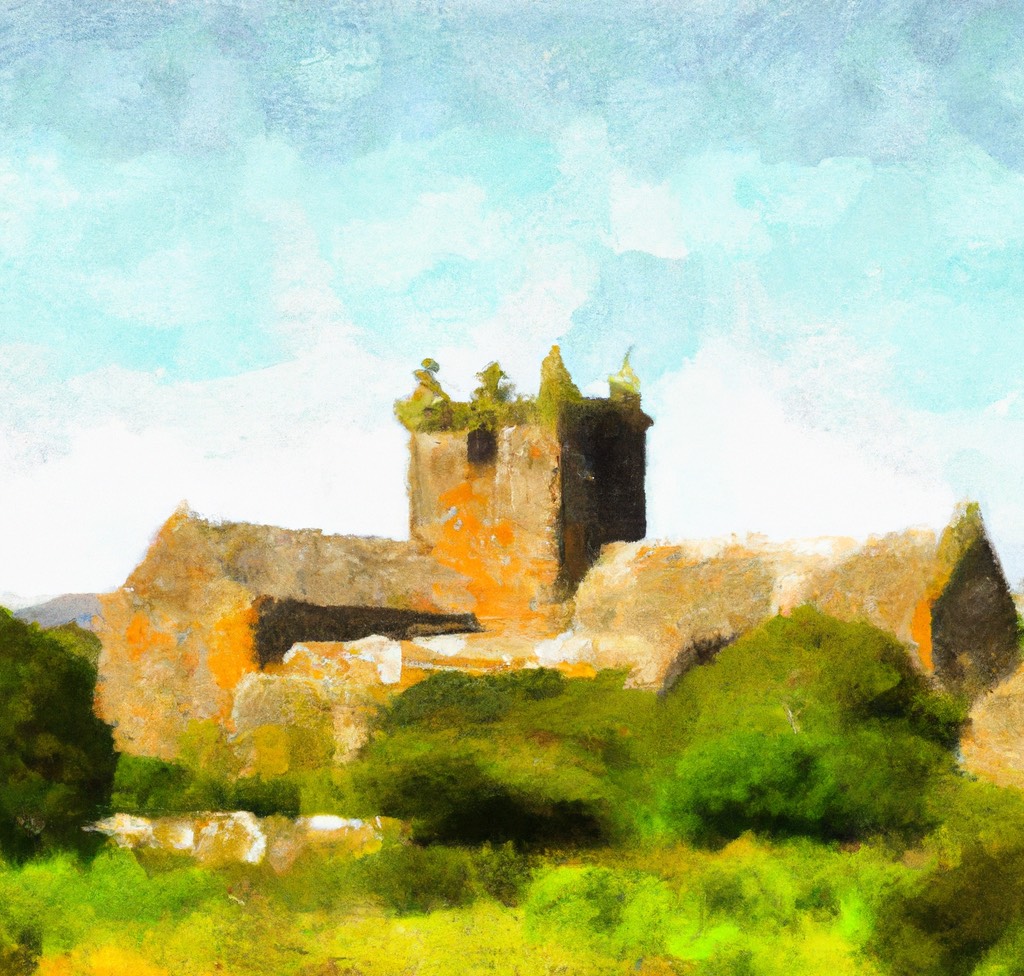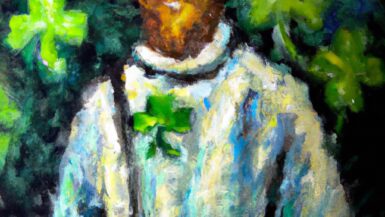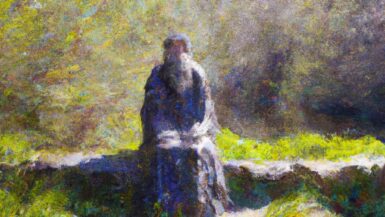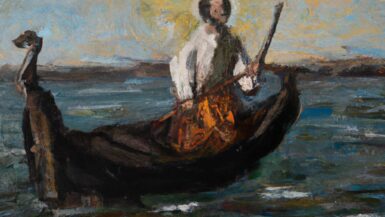St. Columba, also known as Colum Cille, which means ‘Dove of the Church’ in Irish, is a pivotal figure in the early spread of Christianity in Scotland. This Irish abbot and missionary evangelist’s life was filled with legendary tales, including a confrontation with a monster in Loch Ness and significant efforts to convert Scotland to Christianity. Here we delve into the life and legendary exploits of St. Columba.
Early Life and Education
Born in 521 AD in Gartan, a rural area in modern-day County Donegal, Ireland, St. Columba hailed from a family connected to the ruling dynasty of Ui Neill. His early education took place under the tutelage of a priestly tutor at the monastic school at Movilla Abbey. Here, Columba was introduced to the Latin classics and the principles of Christian doctrine.
Founding Monasteries
After his ordination to the priesthood, Columba began to establish monasteries across Ireland. The most famous of these is the Derry Monastery, founded in 546 AD. Columba’s monasteries were not just religious centers; they became hubs of learning, where the arts, literacy, and culture were cultivated alongside spiritual studies.
The Battle of Cul Dreimhne
One of the most pivotal moments in Columba’s life was the Battle of Cul Dreimhne, which took place in 561 AD. The battle was the result of a dispute over a copied manuscript of the Psalms. Columba had borrowed a version of the Psalms from St. Finnian of Moville and had copied it, intending to keep the copy. Finnian objected, arguing that the copy rightfully belonged to him. The dispute escalated and led to the Battle of Cul Dreimhne, in which several men were killed.
Exile to Scotland
After the battle, Columba was held responsible for the deaths and was exiled, leaving his homeland of Ireland and sailing to Scotland with twelve companions in a wicker curragh covered with leather. Arriving in Iona in 563 AD, Columba was granted land by the King of Dál Riata, where he built the now-famous Iona Abbey.
Missionary Work in Scotland
The exiled saint and his companions set about converting the Picts and the Scots to Christianity. Columba used his noble birth to gain an audience with the Pictish King Brude, who was initially resistant to Christianity. Despite the initial resistance, Columba’s charisma and determination won over King Brude, leading to a significant shift in the acceptance of Christianity in Scotland.
The Legend of the Loch Ness Monster
One of the most enduring legends associated with St. Columba is his encounter with the Loch Ness Monster. As the story goes, while Columba was visiting the Pictish courts, he came upon a group of people burying a man near the River Ness. The man had been reportedly attacked by a “water beast” while swimming. Columba, upon hearing this, sent one of his followers to swim across the river. As the beast approached the swimmer, Columba made the sign of the cross and commanded the creature to “go no further, and touch the man not.” The creature halted as if it had been “pulled back with ropes” and fled, and Columba’s follower returned to his companions unharmed.
The Influence of Columba
St. Columba’s influence extended beyond his missionary work. He was known to mediate disputes among the Scottish clans, preventing warfare and promoting peace. His ability to combine the roles of priest, scholar, and statesman effectively made him a significant influence on the socio-political landscape of Scotland.
The Death of St. Columba
In the last years of his life, Columba spent much of his time transcribing books. He continued to actively participate in monastic life, inspiring those around him with his dedication to prayer and labor. St. Columba died in the night between the 8th and 9th of June, 597 AD, in the Iona Abbey. His final days were said to have been spent in prayer and blessing his spiritual sons.
The Legacy of St. Columba
The legacy of St. Columba is enduring and far-reaching. His efforts to spread Christianity played a significant role in the Christianisation of Scotland. The monastic communities he founded, especially the Iona Abbey, became critical centers for the spread of Christianity throughout Scotland and the rest of Britain.
Even after his death, St. Columba’s influence remained strong. The Iona Abbey became a major pilgrimage site, and his relics were venerated. The monks of Iona continued Columba’s missionary work, spreading Christianity throughout the British Isles.
St. Columba in Art and Literature
Like many significant religious figures, St. Columba has been immortalized in art and literature. Medieval illuminated manuscripts, such as the Book of Kells, which was likely started in Iona, might have been inspired by Columba’s own dedication to transcribing books.
Columba is also the subject of the poem ‘Saint Columba – A Vision of Iona’ by Samuel Ferguson and appears in various other literary works. In modern depictions, he is often shown with a book or a pen, symbolizing his role as a scholar and scribe.
St. Columba’s Day
St. Columba’s death anniversary on June 9th is commemorated as St. Columba’s Day. In Iona, his life and contributions to the Church are celebrated with special church services and other community events. In recent years, interest in St. Columba has revived, with pilgrimages to Iona becoming increasingly popular.
Conclusion
St. Columba’s life and work left a lasting impact on the Christian Church and the history of Scotland. From battling mythical creatures to converting kings, Columba’s life was filled with legendary tales. However, beyond the myths and legends, Columba’s real influence lies in his enduring faith, his commitment to peace and scholarship, and his pivotal role in spreading Christianity in Scotland. Over a millennium after his death, the legacy of St. Columba, the Irish saint who battled a monster and converted Scotland, continues to inspire and intrigue.






Leave a reply